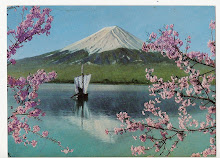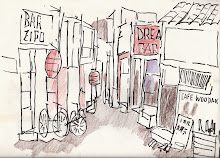
Akihito is the eldest son and the fifth child of Emperor
Hirohito (the Showa Emperor) and
Empress Kōjun. Titled Prince Tsugu
(継宮, Tsugu-no-miya?) as a child, he was raised and educated by his private tutors and then attended the elementary and secondary departments of the Peers' School (
Gakushuin) from 1940 to 1952.
[2] Unlike his precedents in the Imperial Family, he did not receive a commission as an Army officer, at the request from his father, Hirohito.
During the American firebombing raids on Tokyo in March 1945, he and his younger brother, HIH Prince Masahito, were evacuated from the city. During the American occupation of Japan following World War II, Prince Akihito was tutored in English and Western manners by Elizabeth Gray Vining. He briefly studied at the Department of Political Science at Gakushuin University in Tokyo, though he never received a degree. Although he was Heir-Apparent to the Chrysanthemum Throne from the moment of his birth, his formal Investiture as Crown Prince (立太子礼, Rittaishi-no-rei?) was held at the Tokyo Imperial Palace on 10 November 1952. In June 1953, Crown Prince Akihito represented Japan at the coronation of Queen Elizabeth II in London.[2]
Then-Crown Prince Akihito and Crown Princess Michiko made official visits to thirty-seven countries. As an Imperial prince, Akihito compared the role of Japanese royalty to that of a robot; and he expressed the hope that he would like to help in bringing the Imperial family closer to the people of Japan.[3]
After the death of Emperor Hirohito on 7 January 1989, the crown prince received the succession (senso).[4] Emperor Akihito formally acceded to the throne (sokui)[4] on 12 November 1990.[2] In 1998, during a state visit to the United Kingdom, he was invested with The Most Noble Order of the Garter.
On 23 December 2001, during his annual birthday meeting with reporters, the Emperor, in response to a reporter's question about tensions with Korea, remarked that he felt a kinship with Koreans and went on to explain that in the Shoku Nihongi the mother of Emperor Kammu (736–806) is related to Muryeong of Korea, King of Baekje.[5]
Emperor Akihito underwent surgery for prostate cancer in January 2003.[6] Since succeeding to the throne, Emperor Akihito has made an effort to bring the Imperial Family closer to the Japanese people. The Emperor and Empress of Japan have made official visits to eighteen countries, as well as all forty-seven Prefectures of Japan.[2]
In response to the 2011 earthquake, tsunami and nuclear crisis, the Emperor made a rare televised appearance [7] urging his people not to give up hope and to help each other.
[edit] Marriage and children

The newly-married Crown Prince and Crown Princess on Japanese traditional attire, with the Prince wearing a
sokutai, the Princess a
jūnihitoe .
On 10 April 1959, he married Miss Michiko Shōda (born 24 October 1934), the eldest daughter of Mr. Hidesaburo Shōda, the president and later honorary chairman of Nisshin Flour Milling Company.[2][8] The new Crown Princess was the first commoner to marry into the imperial family. The Emperor and the Empress have three children:
- HIH The Crown Prince Naruhito (b. 23 February 1960, titled Hiro-no-miya or Prince Hiro),
- HIH The Prince Akishino (Fumihito, b. 30 November 1965, titled Aya-no-miya or Prince Aya) and
- Sayako Kuroda, formerly HIH The Princess Sayako (titled Nori-no-miya or Princess Nori, b. 18 April 1969).[2]
[edit] Official functions
Despite being strictly constrained by his constitutional position, he also issued several wide-ranging statements of remorse to Asian countries, for their suffering under Japanese occupation, beginning with an expression of remorse to China made in April 1989, three months after the death of his father, Emperor Hirohito.
In June 2005, the Emperor visited the US territory of Saipan, the site of a battle in World War II from 15 June to 9 July 1944 (Battle of Saipan). Accompanied by Empress Michiko, he offered prayers and flowers at several memorials, honoring not only the Japanese who died, but also American soldiers, Korean laborers, and local islanders. It was the first trip by a Japanese monarch to a World War II battlefield abroad. The Saipan journey was received with high praise by the Japanese people, as were the Emperor's visits to war memorials in Tokyo, Hiroshima, Nagasaki, and Okinawa in 1995.
On 6 September 2006, the Emperor celebrated the birth of his first grandson, Prince Hisahito, the third child of the Emperor's younger son. Prince Hisahito is the first male heir born to the Japanese imperial family in 41 years (since his father Prince Akishino) and could avert a possible succession crisis as the Emperor's elder son, the Crown Prince, has only one daughter, Princess Aiko. Under Japan's current male-only succession law, Princess Aiko is not eligible for the throne. The birth of Prince Hisahito could mean that proposed changes to the law to allow Aiko to ascend the Chrysanthemum Throne will not go through after being temporarily shelved following the announcement of Princess Kiko's third pregnancy in February 2006.
[edit] Ichthyological research
In extension of his father's interest in marine biology, the Emperor is a published ichthyological researcher, and has specialized studies within the taxonomy of the family Gobiidae.[9] He has written papers for scholarly journals, namely Gene and the Japanese Journal of Ichthyology.[10]
He has also written papers about the history of science during the Edo and Meiji eras, which were published in Science[11] and Nature.[12] In 2005, a newly described goby was named Exyrias akihito in his honour.
 When I recall my time spent in Japan in the early 60s, the Crown Prince and his beautiful bride Micheko were on the covers of almost every magazine and newspaper I came across. He was a handsome young man and his wife was beautiful and the first "commoner" to ever have been married in the Royal family.
When I recall my time spent in Japan in the early 60s, the Crown Prince and his beautiful bride Micheko were on the covers of almost every magazine and newspaper I came across. He was a handsome young man and his wife was beautiful and the first "commoner" to ever have been married in the Royal family.













